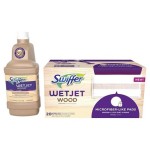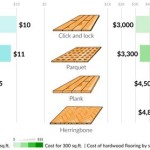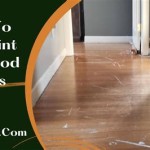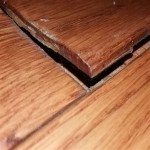Best Wood Flooring Over Radiant Heat: A Comprehensive Guide
Radiant floor heating offers a comfortable and energy-efficient alternative to traditional forced-air systems. The gentle, even warmth it provides can significantly enhance the comfort of a home. However, choosing the right flooring to pair with radiant heat is crucial for optimal performance and longevity. Wood flooring, prized for its aesthetic appeal and natural warmth, can be successfully installed over radiant heat, but careful consideration must be given to the type of wood, installation method, and the specific characteristics of the heating system.
The primary concern when using wood flooring over radiant heat is the potential for excessive moisture loss in the wood. Wood is a hygroscopic material, meaning it absorbs and releases moisture in response to changes in the surrounding environment. Radiant heat can accelerate this process, leading to shrinkage, gaps, and even warping if the wrong wood species or installation methods are employed. Therefore, selecting the appropriate wood flooring and following precise installation guidelines are paramount for a successful and long-lasting installation.
Key Considerations for Selecting Wood Flooring for Radiant Heat
Choosing the right wood flooring for radiant heat involves understanding several key factors. These encompass the wood species, its stability, the type of construction used, the thickness of the planks, and the compatibility of the finish with the heating system.
Wood Species Stability: Some wood species are naturally more stable than others, meaning they are less susceptible to expansion and contraction due to changes in moisture levels. Hardwood species like quarter-sawn oak, engineered hickory, and walnut are generally considered to be more stable choices compared to wider-plank solid hardwoods. Quarter-sawn wood is specifically cut to minimize expansion and contraction, making it particularly well-suited for radiant heat applications. Softwoods, while often less expensive, are generally not recommended due to their higher susceptibility to moisture fluctuations and potential for damage.
Wood Construction Type: Solid hardwood flooring is typically not the best choice for radiant heat installations. While it can be acclimated and installed with careful attention to detail, its inherent susceptibility to moisture issues makes it a less reliable option compared to engineered wood. Engineered wood flooring, consisting of multiple layers of wood veneer bonded together with adhesives, offers significantly greater dimensional stability. The cross-layered construction of engineered planks resists warping and expansion, making it a more predictable and reliable choice for use over radiant heat.
Plank Thickness: Thinner wood planks generally perform better with radiant heat. Thicker planks can act as an insulator, reducing the efficiency of the heating system and potentially trapping heat, leading to uneven temperatures and potential damage to the wood. A thickness of 3/8 inch to 1/2 inch is often recommended for engineered wood flooring over radiant heat. Solid wood, if used, should also be kept as thin as possible, ideally no more than 3/4 inch. Consult with the radiant heat system manufacturer and a flooring professional to determine the optimal thickness for your specific setup.
Finish Compatibility: The finish applied to the wood flooring should be compatible with radiant heat. Finishes that are too brittle or inflexible can crack or peel as the wood expands and contracts due to temperature changes. Water-based polyurethane finishes are generally considered to be a good choice, as they are flexible and durable. Oil-based finishes can also be used, but they may require more maintenance and may be more prone to yellowing over time. It is essential to verify with the finish manufacturer that the product is suitable for use over radiant heat.
Acclimation is Essential: Regardless of the wood species or construction, proper acclimation is critical. Before installation, the wood flooring must be allowed to adjust to the humidity levels of the room where it will be installed. This process typically involves storing the wood in the room for several days or even weeks, allowing it to reach equilibrium with the ambient moisture content. Failure to properly acclimate the wood can lead to significant problems after installation, including excessive shrinkage, gaps, and warping.
Installation Methods for Wood Flooring Over Radiant Heat
The method of installation is as important as the selection of the wood flooring itself. Improper installation can negate the benefits of even the most stable wood species and result in significant problems down the line. Gluing down engineered wood flooring directly to the subfloor is generally the preferred method. However, floating installations with proper underlayment are also possible with certain types of engineered flooring.
Glue-Down Installation: Gluing down engineered wood flooring provides the most stable and efficient transfer of heat from the radiant system to the floor surface. This method involves applying a specialized adhesive designed for wood flooring and radiant heat systems directly to the subfloor and then pressing the planks into the adhesive. The adhesive creates a strong bond between the flooring and the subfloor, preventing excessive movement and ensuring even heat distribution. It is crucial to use an adhesive specifically formulated for radiant heat applications, as standard adhesives may not be able to withstand the temperature fluctuations.
Floating Installation: Floating installations involve interlocking the wood planks together without attaching them directly to the subfloor. Instead, the flooring rests on a thin layer of underlayment. While this method can be quicker and easier than gluing down, it is generally less efficient for heat transfer and may be more prone to movement and noise. If a floating installation is chosen, it is essential to use an underlayment specifically designed for radiant heat. These underlayments typically have a low thermal resistance, allowing heat to pass through efficiently. Additionally, expansion gaps must be carefully maintained around the perimeter of the room to allow for expansion and contraction of the flooring.
Nailing or Stapling: Nailing or stapling solid wood flooring over radiant heat is generally not recommended. These methods can puncture the radiant heating system, causing damage and potentially voiding the warranty. Furthermore, nailing or stapling can restrict the natural expansion and contraction of the wood, leading to cracking and warping.
Subfloor Preparation: Proper subfloor preparation is essential for any wood flooring installation, particularly over radiant heat. The subfloor must be clean, level, and dry. Any imperfections or irregularities in the subfloor can create uneven spots on the flooring, leading to uneven heat distribution and potential damage. Self-leveling compounds can be used to correct minor imperfections in the subfloor, and a moisture meter should be used to ensure that the subfloor is sufficiently dry before installing the flooring.
Managing Radiant Heat System and Moisture Levels
Even with the most careful selection and installation of wood flooring, proper management of the radiant heat system and the ambient humidity levels in the home are critical for long-term success. Controlling temperature fluctuations and maintaining stable humidity levels will minimize stress on the wood and prevent potential problems.
Gradual Temperature Changes: Avoid making drastic temperature changes to the radiant heat system. Instead, gradually increase or decrease the temperature over a period of several hours or even days. Rapid temperature fluctuations can cause excessive stress on the wood flooring, leading to cracking and warping. Programmable thermostats can be used to automate temperature adjustments and ensure a gradual and consistent heating profile.
Maintaining Consistent Humidity: Maintaining consistent humidity levels in the home is crucial for the health and longevity of wood flooring over radiant heat. Ideally, the humidity level should be maintained between 35% and 55%. During the heating season, the air tends to be drier, which can lead to excessive moisture loss from the wood flooring. Using a humidifier can help to maintain the proper humidity level. Conversely, during the summer months, the air can be more humid, which can cause the wood to absorb moisture and expand. Dehumidifiers can be used to reduce excess humidity. Monitoring humidity levels with a hygrometer is recommended to ensure that the proper range is maintained.
Surface Temperature Monitoring: Regularly monitor the surface temperature of the wood flooring to ensure that it does not exceed the recommended maximum. Excessive surface temperatures can damage the wood and reduce the efficiency of the heating system. An infrared thermometer can be used to easily measure the surface temperature of the flooring. The maximum recommended surface temperature typically ranges from 80°F to 85°F, but it is essential to consult with the flooring and radiant heat system manufacturers for specific recommendations.
Annual Inspection and Maintenance: Conducting an annual inspection of the wood flooring and the radiant heat system is recommended. Inspect the flooring for any signs of damage, such as cracks, gaps, or warping. Check the radiant heat system for any leaks or malfunctions. Clean the flooring according to the manufacturer's recommendations to remove dirt and debris that can trap heat and damage the finish. Address any issues promptly to prevent them from escalating into more significant problems.
By carefully considering the wood species, construction type, installation method, and by managing the radiant heat system and humidity levels effectively, homeowners can successfully enjoy the beauty and warmth of wood flooring over radiant heat for many years to come. Consulting with experienced flooring professionals and radiant heat system specialists is highly recommended to ensure a successful and trouble-free installation.

Best Flooring To Install Over A Radiant Heating System Today S Homeowner

What You Need To Know About Radiant Heating With Wood Floors Macdonald Hardwoods

Heated Hardwood And Engineered Floors Warmup Usa

Maple Flooring Over Radiant Heat Fine Homebuilding

Heating Wood Floors 101 Everything You Need To Know Floorings

Can You Install Hardwood Floors Over Radiant Heat Impressions Flooring Collection

Best Flooring Over Hydronic Radiant Heat Warmboard Inc

Heating Wood Floors 101 Everything You Need To Know Floorings

Radiant Heat Wood Quality Hardwoods Superior Design Palo Duro
.jpg?strip=all)
The Best Types Of Flooring For Radiant Heating







